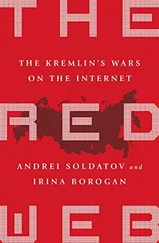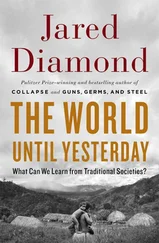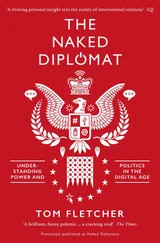Jared Cohen - The New Digital Age
Здесь есть возможность читать онлайн «Jared Cohen - The New Digital Age» весь текст электронной книги совершенно бесплатно (целиком полную версию без сокращений). В некоторых случаях можно слушать аудио, скачать через торрент в формате fb2 и присутствует краткое содержание. Жанр: Старинная литература, на английском языке. Описание произведения, (предисловие) а так же отзывы посетителей доступны на портале библиотеки ЛибКат.
- Название:The New Digital Age
- Автор:
- Жанр:
- Год:неизвестен
- ISBN:нет данных
- Рейтинг книги:5 / 5. Голосов: 1
-
Избранное:Добавить в избранное
- Отзывы:
-
Ваша оценка:
- 100
- 1
- 2
- 3
- 4
- 5
The New Digital Age: краткое содержание, описание и аннотация
Предлагаем к чтению аннотацию, описание, краткое содержание или предисловие (зависит от того, что написал сам автор книги «The New Digital Age»). Если вы не нашли необходимую информацию о книге — напишите в комментариях, мы постараемся отыскать её.
The New Digital Age — читать онлайн бесплатно полную книгу (весь текст) целиком
Ниже представлен текст книги, разбитый по страницам. Система сохранения места последней прочитанной страницы, позволяет с удобством читать онлайн бесплатно книгу «The New Digital Age», без необходимости каждый раз заново искать на чём Вы остановились. Поставьте закладку, и сможете в любой момент перейти на страницу, на которой закончили чтение.
Интервал:
Закладка:
As crowd-sourcing becomes a defining feature in the future of the rule of law—at least in the aftermath of conflict or disaster—a culture of accountability will slowly emerge. Fears of violence or looting will remain, but societies in the future will have all of their personal possessions and their historical artifacts documented online, so there won’t be a question of what’s missing when security returns. Citizens will be rewarded for sending in photos of thieves (even if they’re police) that show their faces and their loot. The risk of retaliation would be real, but evidence suggests that despite their fear there is almost always a critical mass of people willing to take that risk. And the more people there are willing to report crime, the more the risk to the individual is reduced. Imagine if the ransacking of Iraq’s celebrated Baghdad Museum in 2003 had occurred twenty years later: How long would those thieves have been able to hide their treasures (let alone try to sell them) if their theft had instantly been recorded and broadcast across the country, and other citizens were highly motivated to inform on them?
Lost artifacts damage a society’s dignity and the preservation of its culture, but lost weapons constitute a far greater danger to a country’s stability. Weapons and small arms routinely disappear after conflicts and find their way onto the black market (an estimated $1 billion annual business), later appearing in the hands of militias, gangs and armies in other countries. Radio frequency identification (RFID) chips could represent a solution to this challenge. RFID chips or tags contain electronically stored information and can be as small as a grain of rice. They are ever present today, in everything from our phones and passports to the products we buy. (They’re even in our pets: RFID chips embedded under the skin or on an ear are used to help identify lost animals.) If major states signed treaties that required weapons manufacturers to implant unremovable RFID chips in all of their products, it would make the hunt for arms caches and the interdiction of arms shipments much easier. Given that today’s RFID chips can be easily fried in a microwave, the chips of the future will need a shield that protects them against tampering. (We assume there will be a technological cat-and-mouse game between governments who want to track the weapons with RFID chips and arms traffickers who want to deal the weapons off the grid.) When weapons with RFID chips were recovered, it would be possible to trace where they’d been if the chips themselves were designed to store location data. This wouldn’t stop the trafficking of arms but it would put pressure on the larger actors in the arms trade.
States that donate weapons to rebel movements often want to know what happens to those arms. With RFID chips, such investments could be tracked. The Libyan revolutionaries were an unknown quantity to almost everyone, so in the absence of any tracking capability, governments that distributed arms to them had to weigh the benefit of a successful revolution with the possible consequences of those weapons going underground. (In the beginning of 2012, some of the weaponry that Libyan militias used wound up in Mali with disgruntled Tuareg fighters. This, combined with the return of the Tuareg contingent of Gadhafi’s army, led to a violent antigovernment campaign that created the conditions for a military coup.)
Electronically traceable arms distribution will have to overcome hurdles. It will cost money to design weapons that include the RFID; arms manufacturers profit from a large illicit market for their products; and states and arms dealers alike rather enjoy the anonymity of weapons distribution today. It’s hard to imagine any superpower willingly sacrificing its ability to have plausible deniability regarding arms caches or covertly supplied arms for some long-term greater good. Moreover, states might claim that falsely planting another country’s weapons in a conflict zone would point to their involvement and lead to even more conflict. But international pressure might make a difference.
Luckily, there are myriad other ways the RFID technology can be used in the short term in reconstruction efforts. RFID tags can be used to track aid deliveries and other essential supplies, to verify pharmaceuticals and other products as legitimate, and to generally limit waste or graft in large contracting projects. The World Food Program (WFP) has experimented with tracking food deliveries in Somalia, using bar codes and RFID chips to determine which suppliers are honest and deliver food to the target area. This type of tracking system—inexpensive, ubiquitous and reliable—could demonstrably help streamline the serpentine world of aid distribution by enhancing accountability and providing data that can be used to measure success and effectiveness, even in the least-connected places.
• • •
Another innovative use of mobile devices for a post-conflict government involves handling former combatants. Trading in weapons for handsets may become a key feature of any disarmament, demobilization and reintegration (DDR) program. Paul Kagame’s government, while controversial in human rights and governance communities, has overseen the demilitarization of tens of thousands of former fighters through the Rwanda Demobilization and Reintegration Project. “We believe that we need to put tools in the hands of ex-combatants to transform their lives,” he explained. In packages handed out to ex-combatants, “We gave them some money, but we also gave them phones so they could see what the possibilities are.” Most ex-combatants coming through the still ongoing program in Rwanda also receive some form of training that will prepare them for reintegration into society. Psychological treatment is an important component as well. We’ve seen these programs in action, and they resemble summer camps, with classrooms, dorms and activities—fitting, since so many of the ex-combatants in Rwanda are practically children. The key is to start them off with hundreds of others who have a shared experience, and then build their confidence that there is a good life on the other side of combat.
Kagame’s words indicate that we are not far away from more countries trying this. In the aftermath of every conflict, the disarmament of former combatants is a top priority. (Disarmament, sometimes referred to as demilitarization or weapons control, is the process of eliminating the military capacities of warring factions, whether they are insurgents, civil enemies or army factions left over from a previous regime.) In a typical DDR program, weapons are transferred from warring parties to peacekeeping forces over a prescribed period of time, often with some form of compensation involved. The longer the conflict, the longer it takes to complete the process. It took years of prolonged fighting between the northern and southern sides in Sudan to produce the state of South Sudan (which we had the opportunity to visit in January 2013), so the urgent need for a comprehensive DDR program was recognized immediately by the new South Sudanese government and the international community. With more than $380 million in aid from the United Nations, China, Japan, Norway and the United States, the Sudanese on both sides of the border agreed to disarm some two hundred thousand former soldiers by 2017. Two neighboring countries, Uganda and Kenya, concerned about the possible spread of combatants-turned-mercenaries and the illegal transport of arms across borders, also pledged their support in order to reinforce regional security—a critical element of the plan. However, there are few regions as unpredictable and conflict prone as the Great Lakes, so pledges must be taken with a grain of salt.
Most post-conflict environments contain armed ex-combatants who find themselves without work, purpose, status or acceptance by society. Unaddressed, these problems can lead former fighters to return to violence—as criminals, militia members or guns for hire—especially if they still have their weapons. As governments seek to create incentives for ex-combatants to turn in their AK-47s, they will find that the prospect of a smart phone might be more than enough to get started. Former fighters need compensation, status and a next step. If they are made to understand that a smart phone represents not just a chance to communicate but also a way to receive benefits and payment, the phone becomes an investment that is worth trading a weapon for.
Читать дальшеИнтервал:
Закладка:
Похожие книги на «The New Digital Age»
Представляем Вашему вниманию похожие книги на «The New Digital Age» списком для выбора. Мы отобрали схожую по названию и смыслу литературу в надежде предоставить читателям больше вариантов отыскать новые, интересные, ещё непрочитанные произведения.
Обсуждение, отзывы о книге «The New Digital Age» и просто собственные мнения читателей. Оставьте ваши комментарии, напишите, что Вы думаете о произведении, его смысле или главных героях. Укажите что конкретно понравилось, а что нет, и почему Вы так считаете.












